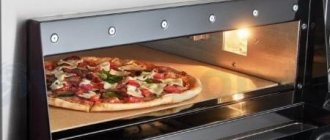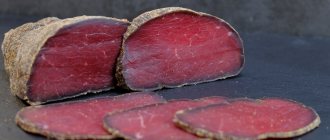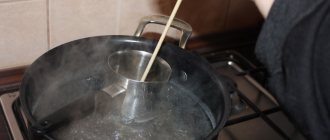Let us briefly answer frequently asked questions about storing crabs and Kamchatka crab in particular.
If you purchased crab meat, it is best stored in vacuum packaging in the freezer. The lower the temperature, the better. The optimal temperature for storing Kamchatka crab in the freezer is -24 degrees. The shelf life of crab in vacuum packaging is approximately 6 months. If there is no vacuum packaging, then wrap the crab meat in several layers of cling film. 3-4 layers will be enough.
Crab meat without packaging or simply in a bag comes into contact with air and freezes (loses moisture). Every day the crab becomes less tasty. 2-3 months is enough for the crab to completely lose its former taste and juiciness.
– if the packaging is not damaged, crab meat will be stored in the freezer for up to 6 months without harm to quality
– without packaging, crab meat will last no more than 30 days, then it quickly loses its taste
– vacuum again or wrap in several layers of stretch film (4-6). The bigger, the better
– if the crab is defrosted, do not freeze it again.
– Thawed fillets can be stored in the refrigerator for up to 48 hours. Depends on temperature
– at room temperature the shelf life is no more than 8 hours, hurry up!
The limbs of the crab do not need to be vacuum-sealed, since the meat is protected by the shell, but for peace of mind and better storage, it doesn’t hurt to wrap them in film. It will not be worse. At wholesale warehouses, crab limbs (salt frozen) are stored in boxes for 3-4 months without harm.
– ice on the shell is necessary for safe and long-term storage
– a large amount of ice is a sure sign of an attempt to sell you water at the price of a crab claw
– Kamchatka crab claws are stored better if wrapped several times in cling film
– best consumed within a month after purchase
– if you plan to give a gift, douse the shell with tap or spray water and freeze
– this will give the color freshness and shine
Here's a short video on how to store frozen crab in the freezer.
Do not store crab limbs in the freezer for more than 2 months. It is better to eat fresh and tasty crab than to eat dry crab. The ideal temperature for storing crab limbs is -18 degrees.
Freezing technology is also of great importance for crab limbs. Crab limbs frozen in brine taste better and are stored better. Air frozen crab is only tasty for the first two weeks. Due to the abundance of air in the limbs, the meat freezes and becomes dry. It is better to buy such crab only in the region where it was caught (Primorsky Krai). We talked about this in detail in our large video, which is dedicated to the correct choice of crabs
If you have cooked crab, it can be stored in the refrigerator for no more than 2 days. Foreign odors (iodine, rotten meat) will tell you that the crab has gone bad. As a rule, the next day the crab meat is fresh and can be consumed without fear. On the second day, residents of Primorye subject it to heat treatment. For example, they make scrambled eggs.
Should I freeze crab after cooking? If you used live crab for a culinary masterpiece, you can freeze the leftovers. If boiled-frozen crab (meat, limbs) was used for cooking, then you should not re-freeze it. The crab meat will be tasteless.
What to do if the crab smells? The best advice is to throw it away. Seafood poisoning is one of the worst. It will be very bad. If you still decide to take a risk, you can reduce the unpleasant smell by pouring boiling water over the crab meat. And of course, deep heat treatment is required. Cook the crab thoroughly to kill all bacteria. But it's better to throw it away.
– a strong smell will let you know that the product is spoiled
– you can take a risk and fry it, preparing a simple dish, such as scrambled eggs
– if the smell is strong, the best thing to do is throw it away, food poisoning is guaranteed
– don’t take risks, keep your health and mood
Read our first article on storing live and boiled crabs. Store crabs correctly!
Source
Maria_Ivanova22 – Feb 10th, 2021
Crabs, like many seafood products, can only last a few days from the date of purchase. It's good that they can be frozen.
Ingredients: crabs
Time to bookmark: All year
Fans of this delicacy need to know how to store crabs in different forms. Each of the methods has certain recommendations that must be followed, otherwise, by consuming expired crab meat, you can get severe food poisoning.
Proper storage of crabs
When purchasing these crustaceans live, you should opt for more active marine inhabitants. Crabs for cooking should be stored in a cold place (usually a refrigerator shelf where vegetables are stored) where the thermometer shows the optimal temperature for storing this product - +4 °C - +6 °C, in a bag with holes. Under such conditions, seafood will be suitable for consumption for 2-3 days.
To make the crab feel more comfortable, before putting it in the refrigerator, place it in cool water (2-3 cm), which needs to be slightly salted. You need to make holes on the lid of the tray with crustaceans. Crabs do not like containers tightly closed. Products that have a strong aroma should not be stored with crabs.
How to store crabs fresh
You can only store crabs outside the refrigeration unit for a couple of hours. After which, they will begin to deteriorate and smell unpleasant.
It is not advisable to store crustaceans without packaging. Boiled crabs should be stored in the refrigerator in foil or in a plastic tray with a lid, and fresh crabs should be stored with a cloth rag.
The expiration date of seafood is indicated by a dull surface. It should be consumed immediately, and if there is already an unpleasant odor, it should be thrown away.
Storing crabs frozen
Storing crabs in the freezer is not the best option. Often, after defrosting, the meat seems to stick to the bones, and if you keep it in the device for too long, it becomes tough. But still, sometimes it is difficult for housewives to do without this process.
Optimal temperature conditions are considered to be -18 °C. They must be stable; jumps are unacceptable. Maximum crabs can be stored in such conditions for no longer than 3 months.
Crabs purchased frozen should not be thawed and then placed in the freezer. The purchased product must be immediately placed in the freezer, then it will be suitable for a whole year. Thawed crab should be eaten the same day.
To prevent the crab from becoming chapped or frozen when stored in the freezer, it must first be wrapped in cling film.
It’s good when you can put the crustacean in the freezer in a box. Repeated freezing of fresh and boiled crabs is unacceptable.
What is the danger of crab sticks?
Typically, the product is not subjected to heat treatment during production. And this increases the risk of its use. It is not the presence of chemical additives that poses a significant danger, but rather the possible microbiological contamination. For example, the presence of gram-negative bacteria - Escherichia coli, etc. To confirm the safety of products, more than 20 different indicators are checked during the examination: for total microorganism content, the presence of sanitary-indicative and dangerous bacteria, toxic substances, pesticides and the like.
Storing boiled crabs
The finished crab dish can be stored in a refrigerator for no longer than 3 days. After this period, it will become not tasty at all.
It’s just that boiled crab will only last a few hours in a usable condition on the kitchen table.
All of the above rules are very important, because failure to comply with them can lead to severe poisoning. It’s ideal if you can buy crabs fresh and cook them right away.
See the video “How to pack and store crab”:
Source
The shelf life of crabs is minimal. It is recommended to eat them within a few days after purchase. You can extend the time seafood keeps fresh by freezing it. Each method has its own distinctive features and implies certain rules.
Nuances of storing crabs:
- crab can be stored at room temperature for no more than a few hours (otherwise the seafood will spoil its taste, acquire an unpleasant odor and become unfit for consumption);
- live crabs are also stored in the refrigerator (it is convenient to place them in special compartments designed for storing vegetables or fruits; in other compartments they will quickly die);
- The optimal option for storing live crabs is salted water (the crabs are placed in a container filled with 2 cm of salted water at room temperature and placed in the coolest possible place in the apartment);
- it is not worth placing live crabs completely in water (the liquid is needed only to “wet” the crabs, and not to create a habitat for them);
- a container with live crabs cannot be closed with a tight lid (oxygen must be regularly supplied to the crabs, so there must be holes in the lid);
- fresh and cooked crabs should only be stored in the refrigerator (the shelf in this case does not matter, the main thing is that the product is kept cold);
- It is not recommended to store crab in an open state (it is better to place cooked crab in a container or foil, and cover fresh crab with a cloth or towel);
- crabs in any form should not be placed near foods with strong aromas (for example, cooked foods, smoked or salted foods);
- placing crab close to products with rich aromas will spoil the taste and smell of the seafood itself, and will also negatively affect its shelf life;
- if during storage the shell of a fresh crab ceases to shine, then this indicates the end of its shelf life (such a product should be consumed immediately, and if there are foreign odors, it is better to get rid of it);
- individual parts of the crab can be frozen in an ice glaze (the claws must be placed in cold water and the container placed in the freezer; after a few hours an ice crust will begin to form on them; when its width reaches 5 cm, the crab must be wrapped in cling film or foil and placed in the freezer );
- You can freeze crab in cling film, a plastic or plastic bag, foil, or in any container with a lid.
The shelf life of crab is affected by the degree of its cutting. If the seafood is not gutted, then it can be stored for no longer than 2 days; the gutted version will last 1-2 days longer. Individual parts of the crab retain their freshness better, so there is no need to create special conditions for their storage.
Storing live Kamchatka crabs:
- Of course, the best way to get the freshest possible crab meat is to keep it alive right up to the point of cooking, so:
- Place the crab in a bag and place it in the refrigerator in the vegetable compartment, set the temperature to +4 +6 degrees. Do not close the bag completely to prevent the crab from suffocating. Shelf life 2-3 days
- Do not place the crab near foods with strong odors.
- Do not close the lid of the container tightly to allow the crab to breathe.
- If the crab's shell has stopped shining, this is the first sign that it will soon deteriorate. It’s better to cook and then freeze. Boiled frozen crab can be stored for 6 months
- It is not recommended to freeze raw crab; after defrosting and cooking, the meat will be very difficult to separate from the bones.
What are crab sticks
The first crab sticks originated in Japan in the early 70s and quickly gained popularity, winning a place of honor in the world market. Few people think about their composition when they first meet crab sticks. It’s enough to try the salad of the same name at a party, and the next day we are in the store with a basket, and in it there are already several packs of our favorite product. And we continue to love them even despite the fact that under the alluring name “crab” there is hidden ordinary minced fish that insidiously imitates crab meat - surimi. It is also actively used in the production of breaded semi-finished fish products, and you can also find it in the famous California roll.
Surimi is made from white fish fillets - hake, pollock, horse mackerel and others. It is cleared of bones, washed thoroughly, freed from fat and ground into a fine paste, which is mixed with other ingredients and pressed into molds. As a result, we get “crab meat”.
The smell typical of crabs in the product is obtained thanks to the added crab extract (this is the only crab component in the composition). Although recently they have begun to replace it with flavors with the same deceptive name “Crab”. Special additives enhance the taste and smell - the most common of them is monosodium glutamate, without which almost no product on the store shelf can now be found.
Storing boiled crabs:
- At room temperature, crab can be stored for several hours; it is a very perishable product.
- Crab can be stored in the refrigerator for a day, maximum two.
- If the crab begins to smell, eating it is dangerous
- If you cooked live crab, you can freeze it, but it is advisable to form a protective glaze of ice. Shelf life when frozen at home – 6 months
- Pack frozen crab with film, this will protect it from freezing and loss of moisture, otherwise after 3 months it will simply not be tasty
- If freezer space allows, place frozen crab in a box.
- Re-cooked crab should not be frozen; after defrosting, it will fall apart like porridge.
Boiled crabs and proper nutrition
Crabs, like all other seafood, fit perfectly into the diet. Their tasty, sweetish meat has almost no fat, and protein is no less than chicken and beef. The calorie content is lower than the leanest lean meat - on average about 90 kcal!
KBJU of crab (boiled): 96 kcal, 16 g protein, 3.6 g fat, 0 g carbohydrates.
There are species that have a slightly higher calorie content due to the larger amount of fat, and there are also those with lower calorie content. There is practically no fat in small Black Sea fish.
And it’s not at all difficult to cook crabs; it’s more difficult to properly cut them after cooking.
You need to choose them carefully - only live, mobile specimens with a hard, intact shell, shiny eyes and no pungent odor are suitable for cooking. If you buy frozen ones, do it at trusted retail outlets that can provide the necessary documents on expiration dates. This is what, for example, frozen high-quality fresh crabs look like:
Let me remind you, just in case: crabs with a red shell are already boiled; those that have not been subjected to heat treatment can have shells ranging from gray-green to black.
There is no need to store live crabs, a maximum of 12 hours in sea water. Ice cream can be stored for several months if you do not allow it to defrost, since repeated freezing will worsen the taste of the cooked crab and reduce its beneficial qualities.
Long-term storage or keeping of crabs
To store live crabs for a longer period of time, you will need a specially equipped aquarium with sea water and a stable eco-system.
In industrial settings, companies that sell live seafood have well-established and expensive equipment for cleaning, enriching, and saturating sea water. The system is monitored continuously. Such systems are called “live seafood storage.”
And it is best to buy Kamchatka crab in our online store, because we value our reputation and guarantee the quality of the product.
Best regards, MySeafood.ru
Source
Crabs (an order of crustaceans), like most seafood, can be stored for only a few days from the date of purchase, after which they need to be eaten or frozen. Today we will talk about how to store crabs, live, boiled, chilled and frozen. There are certain rules for each method of storing this product, the implementation of which is strictly necessary so that low-quality meat does not cause severe poisoning.
How to choose
When purchasing these crustaceans alive, the most active individuals are selected.
- Live crabs should be stored in a cool place. They are placed in a bag with holes (it should not be tightly closed either) and kept at a temperature of +4°C -+6°C in the vegetable compartment of the refrigerator for 2 – 3 days.
- Crustaceans feel most comfortable in cool, salted water. Water is poured into a plastic container to a depth of 2–3 cm, after which living individuals are placed there. The container is kept in the coolest place in the room.
The crab does not have to be entirely in the water: it is enough for it to maintain a certain humidity of the body and limbs.
The container must not be hermetically sealed: Arthropods require constant access to air. To do this, several holes are made in the lid.
Fresh storage
Without refrigeration, crabs can be stored for only a few hours. Then they will begin to deteriorate and acquire an unpleasant odor.
It is not advisable to freeze this product. Once thawed and cooked, the meat will be very difficult to separate from the bones. Therefore, storing fresh crabs and already cooked ones should only be done in the refrigerator and not in the freezer.
It is not recommended to store crabs without packaging. It is better to keep cooked ones wrapped in foil or in a plastic container with a lid, and fresh ones covered with a cloth.
When the surface of the shell of a fresh crustacean loses its shine, this indicates that the shelf life of the product has expired. It is immediately consumed as food. And if an unpleasant smell appears, throw it away.
How to properly defrost crab sticks
Many people like crab sticks not only for their taste, but also for their delicate, juicy consistency, and due to improper defrosting there is a risk of turning the product into a rubbery, tasteless mass. But there are several options that will allow you to avoid spoiling the crab sticks.
As a rule, defrosting food takes several hours, so take into account the time spent in advance in order to have time to serve the salad with chilled sticks, and not small pieces of ice. The best way to thaw imitation crabmeat is to let it sit overnight.
Frozen storage
In order to store crab in the freezer for as long as possible, you need to create a certain temperature regime (-18°C, no higher), and avoid fluctuations. The temperature should always be stable. The maximum shelf life in the freezer is no more than 3 months.
After 3 months, the meat will begin to lose its taste and become tough. Therefore, it is advisable to consume seafood before this date.
When purchasing frozen crabs, place them immediately in the freezer without defrosting. Then they can be stored there for 12 months. And if the product has managed to thaw, it is advisable to consume it immediately.
Before storing the crab in the freezer, wrap it in film. This will help protect the product from chapping and freezing. If you keep it without packaging, after 3 months the meat will lose its taste: it will become dry and tough.
If possible (if there is space in the freezer), the product is placed in a box.
Repeated freezing for boiled crustacean is undesirable: it will lose its dense structure and taste. This also applies to fresh frozen products.
How to choose and store the product correctly
Surimi, white fish meat, is used to produce crab sticks. The official name according to GOST is “analogue of crab meat”.
Cod fish meat is ground into a homogeneous, plastic mass and passed through a centrifuge to remove moisture.
A good quality product contains calcium, potassium, sodium, phosphorus, zinc, iron and iodine, vitamins B1 and B2.
The nutritional value:
- calorie content – 95 kcal;
- proteins – 5 g;
- carbohydrates – 11 g;
- fats – 2 g.
The product contains egg powder and starch to increase the protein content and elastic structure.
When choosing frozen or chilled crab sticks, pay attention to the following:
Do you always follow the correct storage of food/medicines and their product proximity?
Yes, of course, this is very important so as not to spend money on your health later.
43.91%
Not really, because there won’t be anything like going to the toilet.
24.72%
I look at it by appearance and if I use anything after heat treatment.
31.37%
Votes: 271
- Integrity of packaging - it must be without tears or perforations, each stick is wrapped in cellophane wrapper.
- Label - it should indicate the detailed composition of the product, place and date of manufacture, expiration date and storage conditions.
- It is better to refrain from buying in bulk - it is not known when and where they were made, from what raw materials.
- The first place in the composition should be fish fillet or surimi. This suggests that the protein product makes up the majority of the volume.
- If surimi is in the second or third position, the composition contains no more than 20% minced fish.
- Appearance. The sticks should be smooth, elastic, juicy (not dry and not too watery).
- The upper part is uniformly colored from pink to red, and the main part is white. A grayish tint indicates the use of a large amount of starch or flour, a yellowish tint indicates that the product is stale. Too bright a color indicates too much food coloring.
- Crab sticks are presented chilled and frozen. When choosing a product, it is recommended to pay attention to the location of the shelves: chilled ones are on refrigerator display cases, frozen ones are in freezer cabinets.
- The cost of quality products cannot be low. The lower the price, the worse the quality.
- To determine the quality, after purchasing it is enough to break the stick in the middle. If it breaks easily, it means the product is of high quality; if not, there is no minced fish in it or very little.
- An overly wet, rubbery or dry texture indicates poor product quality.
- If after defrosting the structure becomes dry, wrinkled or sticky, the product was stored in violation of the temperature regime.
- A high-quality stick easily unfolds and rolls back without tearing.
- Ice grains in the package indicate that the product has been re-frozen.
How long can crab sticks be stored?
The name of this product does not match the contents. Crab sticks are made from chopped meat of oceanic fish species (pollock, mackerel, etc.).
- The basis of crab sticks is fish fillet (it is first cleaned and washed). The assumption that this product is made from freshly caught fish waste is incorrect. It is made exclusively from fish fillets.
- External resemblance to natural crustacean meat is a sign of a quality product. High-quality sticks should be resilient, elastic, and have a reddish color on one side.
Note! If the color of the sticks is too bright, this is an indicator of artificial dye.
- After defrosting, the sticks should retain their taste and consistency. When they are too rubbery and too wet, this also indicates a poor quality product.
- If the rules for storing crab sticks are not followed, after defrosting they become dry, wrinkled or stuck together. This result is also obtained when using low-quality raw materials.
- The normal amount of surimi (beaten, finely chopped white fish meat) in this seafood is considered when the sticks are easily separated from the wrapper.
- Crab sticks should be stored in the freezer at a temperature of -18°C. If there are particles of ice or snow in the package, this indicates that the product has been re-frozen.
- When choosing, it is better to choose products with a minimum content of artificial ingredients. And also pay attention to the ratio of natural fish fillet to other ingredients. It should be 25 - 45% of the total mass.
- A quality product cannot be cheap. A low price is a sign of the artificial origin of a product.
- Instead of buying in bulk, it is better to prefer a product from a well-known manufacturer, which is in vacuum packaging. In addition, you can read all the information about the product on the packaging, unlike a loose product.
Storing chilled sticks
At +2°С -+6°С you can store crab sticks for no more than 3 days. To extend the shelf life of the product to 2 months, it is frozen.
Note! Re-freezing the sticks is not recommended. If the product has already been defrosted, it must be processed or used for food.
How to buy boiled-frozen peeled phalanges
Low percentage of waste. The ability to visually determine the quality of meat by color and volume. And an undoubted advantage: when frozen individually, you can buy the required amount of crab meat.
Phalanxes are appetizing, attractive in appearance, and you don’t have to be fancy with them, but simply serve them as an independent dish with a suitable sauce. The simplest and yet excellent: a mixture of melted butter and a few drops of Tabasco sauce. Or you can simply sprinkle the crab with lemon juice, but this is not for everyone.
High cost of the product. When individually frozen, a large amount of ice glaze usually occurs (in some cases up to 50%). With block freezing, you will have to buy a kilogram or more of an expensive delicacy at once.
Serving crab phalanges in a restaurant
How to choose
Do you use expired food for cooking at home?
Yes, the main thing is to process it if it is meat or expired kefir for pancakes.
27.72%
No, it is very dangerous and not useful.
36.37%
If the products have fungus or mold, then we throw them away; if they are a couple of days past their expiration date, we use them for food, even without heat or other treatment.
35.91%
Voted: 1952
Pay attention to compliance with the temperature regime (no excess glazing), shelf life and color saturation (ideal - red or deep pink). Size is also important, since often the less expensive second phalanx is passed off as the first.
Kamchatka crab is one of the main Russian delicacies. It is certainly delicious and also undeniably expensive, but you can afford to buy it for the New Year. We talked with Oleg Gugunava, the owner of Captain Seledkin's Fish Shop , how to buy crab correctly, what you need to pay attention to when buying and how not to waste money.
Whole crabs are sold live or boiled and frozen. On sale there are also boiled-frozen claws, peeled phalanges, boiled-frozen salad meat, plus, of course, canned food and crab sticks, which have nothing to do with crabs (only the name).











